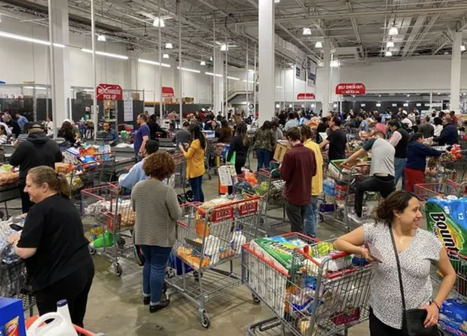Significance
The recent Covid-19 pandemic highlighted that understanding the channels of disease transmission is crucially important for public health policies. However, measuring transmissions occurring through casual contact in the public space is highly challenging as researchers generally do not observe when infected individuals intersect casually with noninfected individuals. We overcome this methodological challenge in the context of the Covid-19 pandemic by combining card payment data, indicating exactly where and when individuals visited stores, with test data indicating when they were infected. We document that exposure to an infected individual in a store is associated with a significantly higher infection rate in the following week. Our estimates imply that transmissions between retail shoppers made a substantial contribution to the Covid-19 pandemic.
Abstract
This paper presents quasiexperimental evidence of Covid-19 transmission through casual contact between customers in retail stores. For a large sample of individuals in Denmark, we match card payment data, indicating exactly where and when each individual made purchases, with Covid-19 test data, indicating when each individual was tested and whether the test was positive. The resulting dataset identifies more than 100,000 instances where an infected individual made a purchase in a store and, in each instance, allows us to track the infection dynamics of other individuals who made purchases in the same store around the same time. We estimate transmissions by comparing the infection rate of exposed customers, who made a purchase within 5 min of an infected individual, and nonexposed customers, who made a purchase in the same store 16 to 30 min before. We find that exposure to an infected individual in a store increases the infection rate by around 0.12 percentage points (P < 0.001) between day 3 and day 7 after exposure. The estimates imply that transmissions in stores contributed around 0.04 to the reproduction number for the average infected individual and significantly more in the period where Omicron was the dominant variant.
Published in PNAS (April 17, 2024):



 Your new post is loading...
Your new post is loading...







